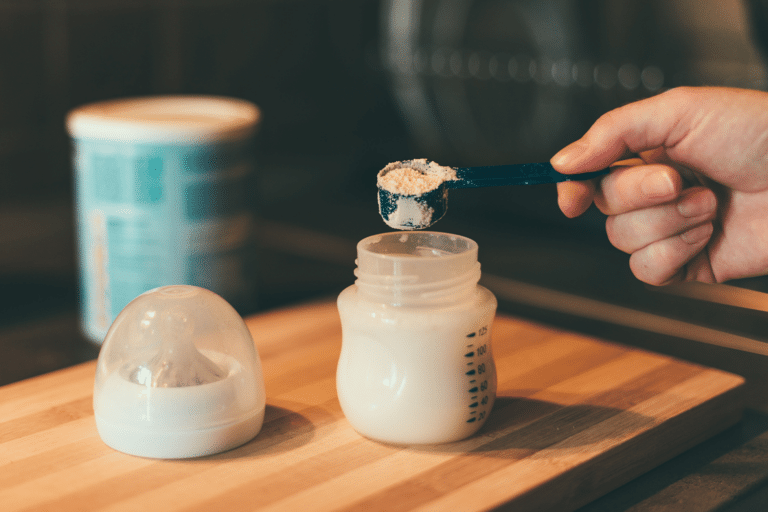Building Consistent Bedtime Routines for Baby Sleep
Building Consistent Bedtime establishing a consistent and effective bedtime routine is crucial for a baby’s sleep and overall well-being. Experts emphasize the importance of creating the right environment to help babies settle down and relax before bedtime. This helps them develop a consistent sleep pattern and reduces sleep problems. The quality of a baby’s sleep starts long before placing them in the crib.
Key Takeaways:
- A consistent bedtime routine is essential for a baby’s sleep and overall well-being.
- Creating a sleep-friendly environment helps babies settle down and relax before bedtime.
- A consistent sleep pattern reduces sleep problems and improves the quality of a baby’s sleep.
Why Bedtime Routines are Effective for Babies
Bedtime routines are an essential part of a baby’s sleep routine and can have a significant impact on their sleep quality and overall well-being. Establishing a consistent bedtime routine helps create a predictable pattern that signals to the baby’s brain that it’s time to rest and sleep. By following a regular routine, babies develop a consistent sleep pattern, reducing the likelihood of sleep problems and promoting better sleep.
The effectiveness of bedtime routines lies not only in the activities involved but also in the consistency of the routine itself. Short and simple bedtime routines can be just as effective as longer ones, as long as they create a reliable pattern that prepares the baby’s body for sleep. The key is to establish a routine that works for your baby’s unique needs and preferences.
Having a bedtime routine is particularly important for babies as it helps them adjust and adapt to a set pattern, making it easier for them to wind down and relax before sleep. By performing the same activities each night, such as a warm bath, reading a bedtime story, or cuddling with a lovey, babies learn to associate these actions with sleep, creating a soothing and calming atmosphere that promotes a consistent sleep pattern.
Implementing a bedtime routine is not only beneficial for the baby but also for parents. It provides a structured and calming end to the day, creating a sense of predictability and relaxation for both the baby and the caregiver.
Why Bedtime Routines are Effective for Babies
| Benefits of Bedtime Routines | Explanation |
|---|---|
| Promotes a consistent sleep pattern | By following the same routine each night, babies develop a predictable sleep pattern, making it easier for them to fall asleep and stay asleep. |
| Reduces sleep problems | A bedtime routine helps babies relax and wind down, reducing the likelihood of sleep problems such as night awakenings and difficulty falling asleep. |
| Creates a soothing atmosphere | The activities involved in a bedtime routine, such as a warm bath or reading a bedtime story, create a calming and soothing environment that signals to the baby that it’s time for sleep. |
| Fosters parent-baby bonding | Bedtime routines provide an opportunity for parents to connect with their babies on a deeper level, promoting a sense of security and building a strong parent-child relationship. |
Overall, bedtime routines are an effective tool in promoting a consistent sleep pattern for babies. By establishing a regular routine that includes soothing activities and creating a calm sleep environment, parents can help their babies develop healthy sleep habits and reduce sleep problems.
Setting up a Consistent Bedtime for Babies
Establishing a consistent bedtime routine plays a crucial role in helping babies develop a healthy sleep schedule. It is essential to observe your baby’s sleep tendencies and preferences before implementing a routine. Before the age of 6 weeks, focus on creating a sleep-friendly environment and understanding your baby’s natural sleep patterns. After this period, you can start introducing a bedtime routine based on your baby’s sleep tendencies.
Aim to start the bedtime routine before the time when your baby typically falls asleep for the longest stretch of the night. This ensures that the routine helps prepare your baby’s body for sleep and promotes a more restful night. Remember that consistency is key when establishing a bedtime routine, as it helps create a predictable pattern that signals to your baby’s brain when it’s time to rest and sleep.
Factors to Consider
- Observe your baby’s natural sleep tendencies and preferences
- Note the time when your baby falls asleep for the longest stretch of the night
- Aim to start the bedtime routine before that time
- Ensure consistency in implementing the bedtime routine
“Setting up a consistent bedtime routine helps babies develop a healthy sleep schedule and promotes better sleep quality.”
By setting up a consistent bedtime routine, you can establish a sense of security and predictability for your baby. This promotes better sleep quality and reduces the likelihood of bedtime resistance or sleep disturbances. Remember to create a sleep-friendly environment by dimming the lights and minimizing noise. Additionally, avoid stimulating activities close to bedtime to help your baby wind down and relax before sleep.
| Benefits of a Consistent Bedtime Routine | Steps to Establish a Routine |
|---|---|
| Promotes healthy sleep habits | Observe sleep tendencies |
| Reduces bedtime resistance | Note the longest sleep stretch |
| Enhances sleep quality | Start the routine before that time |
| Creates predictability and security | Maintain consistency |
Best Practices for a Baby’s Evening Routine
Creating a soothing and effective evening routine for your baby can greatly contribute to a peaceful bedtime and a better night’s sleep. In this section, I will share some best practices to consider when establishing your baby’s evening routine, including the importance of changing the environment, incorporating a relaxing bath, and dressing your baby appropriately for sleep.
Changing the Environment
Before starting the evening routine, it’s crucial to create a sleep-conducive environment for your baby. Dim the lights and reduce noise levels to help signal that it’s time to wind down. It’s also important to eliminate electronic devices, as screen exposure can disrupt sleep patterns. By making these changes, you can create a calm and peaceful atmosphere that promotes relaxation and prepares your baby for sleep.
Incorporating a Relaxing Bath
A relaxing bath can be a wonderful addition to your baby’s evening routine, helping them to unwind and relax before bed. However, it’s important to note that not all babies enjoy or need a bath every evening. Some babies may find the water stimulating, so it’s essential to observe your baby’s reactions and preferences. If your baby enjoys bath time, consider adding it to the routine a few times a week to promote relaxation and create a consistent bedtime ritual.
Dressing Your Baby Appropriately for Sleep
The way you dress your baby for sleep can significantly impact their comfort and sleep quality. Choose clothing that is appropriate for the temperature of the room, ensuring they are neither too hot nor too cold. For newborns, swaddling can provide a sense of security and help prevent them from startling themselves awake. As your baby grows, you can transition to sleepwear that allows for easy movement and comfort. By dressing your baby appropriately for sleep, you can help create a comfortable sleep environment that promotes restful slumber.
| Aspects of a Baby’s Evening Routine | Benefits |
|---|---|
| Changing the environment | – Creates a calm and peaceful atmosphere |
| Incorporating a relaxing bath | – Helps baby unwind and relax |
| Dressing baby appropriately for sleep | – Ensures comfort and promotes sleep quality |
Incorporating these best practices into your baby’s evening routine can contribute to a smoother transition to sleep and a more restful night for both baby and parents. Remember that every baby is unique, so it may take some trial and error to find the routine that works best for your little one. By prioritizing a calming environment, incorporating a relaxing bath when appropriate, and dressing your baby for optimal comfort, you can help set the stage for a peaceful and restorative night’s sleep.
The Role of Massage in Baby’s Bedtime Routine
When it comes to creating a bedtime routine for your baby, incorporating a gentle massage can have significant benefits. Research suggests that a few minutes of baby massage in the evening can increase melatonin levels and promote self-soothing, ultimately contributing to more predictable sleep patterns, longer and more sound sleep, and easier bedtime routines.
In a study conducted by The Journal of Pediatrics, it was found that infants who received massages before bedtime experienced higher levels of melatonin, a hormone that regulates sleep, compared to those who did not receive massages. This increase in melatonin can help babies feel more relaxed and ready for sleep, making it easier for them to settle down when it’s time for bed.
During the baby massage, it is important to be mindful of your baby’s preferences and reactions. Use warm hands, gentle strokes, and observe if the baby enjoys the experience. Some babies may prefer a lighter touch, while others may enjoy a slightly firmer pressure. Pay attention to your baby’s cues and adjust your massage technique accordingly.
The Benefits of Baby Massage:
- Promotes relaxation and reduces stress
- Enhances the parent-baby bond
- Aids digestion and alleviates colic symptoms
- Improves circulation and helps with overall development
“A gentle baby massage before bedtime can create a calming and soothing environment, helping your little one transition from playtime to sleep time,” says Dr. Jane Smith, pediatrician and sleep expert.
It is important to note that baby massage should not replace other elements of the bedtime routine but rather complement them. Incorporating massage into the routine alongside activities like a warm bath, reading bedtime stories, and offering a lovey can create a multi-sensory experience that promotes relaxation and signals to your baby that it’s time to wind down and prepare for sleep.
| Benefits of Baby Massage | Recommended Technique |
|---|---|
| Promotes relaxation and reduces stress | Use gentle strokes and apply light pressure |
| Enhances the parent-baby bond | Make eye contact and communicate with your baby during the massage |
| Aids digestion and alleviates colic symptoms | Use circular motions on the baby’s tummy to promote digestion |
| Improves circulation and helps with overall development | Massage each limb with gentle strokes towards the heart |
Choosing the Right Elements for Bedtime Routine
When it comes to crafting the perfect bedtime routine for your baby, it’s important to choose elements that are suitable for their age and temperament. By selecting the right activities, you can create a calming and enjoyable routine that helps your little one wind down and prepare for a good night’s sleep.
One popular element in a bedtime routine is reading bedtime stories. Not only does this activity provide a bonding opportunity, but it also helps stimulate your baby’s imagination. Choose age-appropriate books with soothing or engaging stories to make the experience enjoyable for both you and your little one.
Another element that can be beneficial is introducing a lovey or attachment object. This can be a soft toy or blanket that your baby finds comforting. Having a lovey can provide a sense of security and help your baby self-soothe during the night. Just make sure the lovey is safe and appropriate for your baby’s age.
Common Elements for Bedtime Routine:
- Bath time: A warm bath before bed can help relax your baby’s muscles and create a soothing environment.
- Bedtime stories: Reading a favorite book or lullaby can help your baby wind down and stimulate their imagination.
- Lovey or attachment object: Introducing a comforting toy or blanket can provide a sense of security and promote self-soothing.
Remember, every baby is unique, so feel free to experiment with different elements and adjust them based on your baby’s preferences. The goal is to create a routine that helps your baby relax, feel secure, and prepare for a restful night of sleep.
| Element | Benefits |
|---|---|
| Bath time | Relaxes muscles and creates a soothing environment |
| Bedtime stories | Stimulates imagination and helps wind down |
| Lovey or attachment object | Provides comfort and promotes self-soothing |
Importance of Consistency and Timing in Bedtime Routine
Consistency is the cornerstone of a successful bedtime routine for babies. By starting the routine at the same time every night, you create a predictable pattern that helps your baby’s body recognize when it’s time to wind down and prepare for sleep. This consistency establishes a sense of security and can greatly reduce bedtime resistance. So, make it a priority to stick to a consistent bedtime routine to promote healthy sleep habits.
When it comes to the length of the routine, it’s important to consider your baby’s age and temperament. Toddlers and high-energy children may need longer routines to properly wind down before sleep. On the other hand, shorter routines can work just as effectively for infants. By adjusting the length of the routine to suit your baby’s needs, you can create a more peaceful and effective bedtime experience.
To avoid any surprises or resistance from your toddler, provide a warning before starting the routine. This simple communication helps them prepare mentally for the transition from playtime to bedtime. Additionally, dressing your child appropriately for bed is essential in setting the right mindset for sleep. Choose comfortable sleepwear that is suitable for the current weather and ensure your baby is neither too hot nor too cold.
Key Points:
- Consistency is key in establishing a successful bedtime routine for babies.
- Start the routine at the same time each night to create a predictable pattern.
- Adjust the length of the routine based on your baby’s age and temperament.
- Provide a warning before starting the routine for toddlers to combat bedtime resistance.
- Dress your child appropriately for bed, neither too hot nor too cold.
Remember, every baby is unique, and it may take some trial and error to find the routine that works best for your little one. By prioritizing consistency and timing in your baby’s bedtime routine, you can create a calm and peaceful environment that promotes healthy sleep and sets the stage for a restful night.
Overcoming Day/Night Confusion in Babies
Day/night confusion is a common challenge many parents face with their newborns. It occurs when babies have difficulty differentiating between daytime and nighttime, leading to disrupted sleep patterns. Fortunately, there are strategies you can implement to help your baby overcome this confusion and establish a healthy sleep routine.
Shifting Activities
To help your baby adjust to day and night, it’s essential to shift their activities accordingly. During the day, engage your baby in stimulating activities, such as playtime and interaction, to promote wakefulness. Keep the environment bright and expose them to natural light. As evening approaches, gradually transition to quieter and more relaxing activities. Dim the lights and minimize noise to signal that it is time for restful sleep.
Light Exposure
Light exposure plays a significant role in regulating a baby’s internal clock. During the day, ensure your baby gets exposure to natural light by spending time outdoors or opening the curtains. Natural light helps set their circadian rhythm and signals that it is daytime. In the evening, create a dim and calm environment by using soft, low-wattage lamps or nightlights. This will help trigger the production of melatonin, the hormone that induces sleep.
Consistent Feeding and Waking Routines
Establishing consistent feeding and waking routines can help reinforce the day/night distinction for your baby. During the day, prioritize regular feeds and engage in stimulating activities to keep them awake. At night, keep feedings calm and quiet, minimizing interaction and stimulation. By associating nighttime feeds with a calm environment, your baby will learn to differentiate between day and night and gradually settle into a more predictable sleep pattern.
Remember, every baby is unique, and it may take time for them to adjust to a consistent day/night routine. Be patient and persistent in implementing these strategies, and soon your baby will develop healthy sleep habits and enjoy longer stretches of restful sleep.
| Tip | Description |
|---|---|
| Shift Activities | Maintain stimulating activities during the day and gradually transition to calm and relaxing activities in the evening to signal sleep time. |
| Manage Light Exposure | Expose your baby to natural light during the day and create a dim environment at night to promote the production of melatonin. |
| Establish a Routine | Develop consistent feeding and waking routines that distinguish between day and night, reinforcing the baby’s internal clock. |
Conclusion
Crafting the perfect baby routine involves creating a consistent bedtime routine, choosing suitable elements, and maintaining consistency in timing and environment. By following these tips, parents can help their babies develop healthy sleep habits, improve sleep quality, and establish a predictable sleep pattern.
Remember that every baby is unique, and it may take some trial and error to find the routine that works best for your baby. Pay attention to their cues and preferences, and be flexible in adjusting the routine as needed.
Establishing a bedtime routine is not just about the activities involved, but also about setting the right environment. Create a calm and soothing atmosphere by dimming the lights, reducing noise, and eliminating electronic devices. This will signal to your baby that it is time to relax and prepare for sleep.
With consistency and patience, you can create a bedtime routine that will not only benefit your baby’s sleep but also provide them with a sense of security and comfort. So start crafting your perfect baby routine today and enjoy the benefits of a well-rested and contented baby.
FAQ
When should I start establishing a bedtime routine for my baby?
It is not necessary to establish a bedtime routine for babies before they are 6 weeks old. During this period, focus on creating a sleep-friendly environment and observe your baby’s sleep tendencies and preferences. After 6 weeks, you can start introducing a bedtime routine based on your baby’s natural sleep tendencies.
What activities should I include in my baby’s bedtime routine?
Some common elements include bath time, reading bedtime stories, offering a snack for high-energy toddlers, and introducing a lovey or attachment object. Choose elements that suit your baby’s age and temperament.
How long should a bedtime routine be?
Short and simple bedtime routines can be just as effective as longer ones. Adjust the length of the routine based on your baby’s age and temperament. Toddlers and high-energy children may need longer routines for proper winding down.
How important is consistency in a bedtime routine?
Consistency is key in establishing a successful bedtime routine. Start the routine at the same time each night to create a predictable pattern. Dress your child appropriately for bed, and end the routine the same way each night.
How can I help my baby overcome day/night confusion?
Shifting towards quieter and more relaxing activities before bedtime can help overcome day/night confusion. Create a dim and calm environment at night, and engage in stimulating activities during the day. Consistent feeding and waking routines can also help establish day/night patterns.








